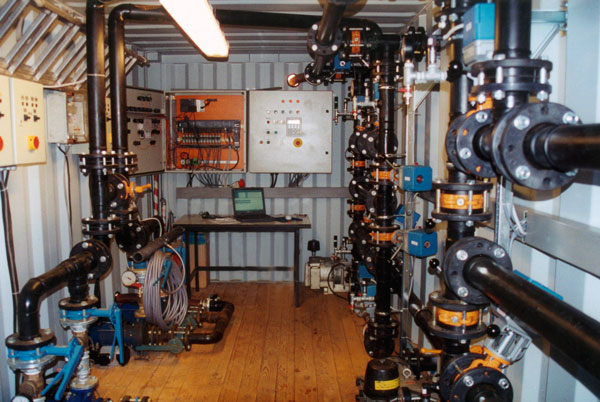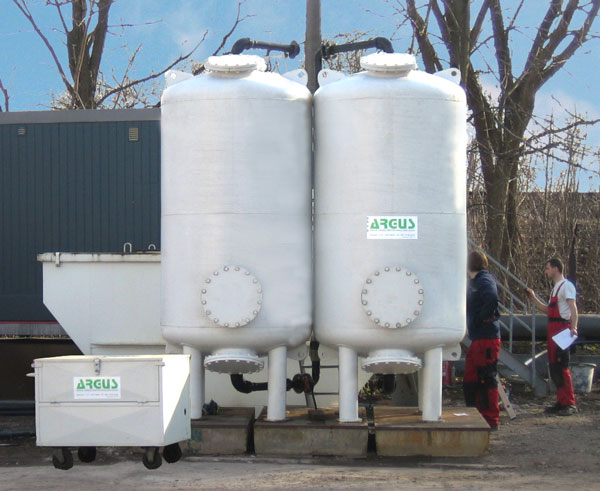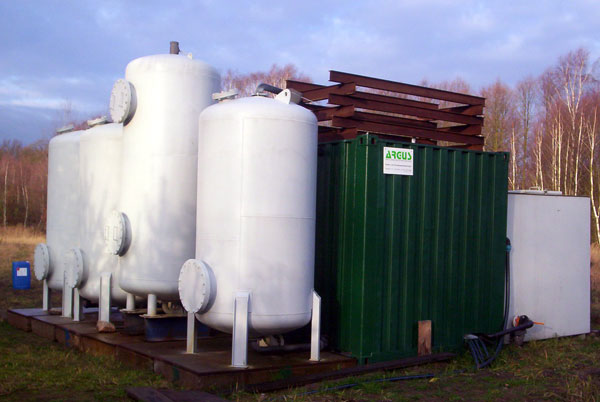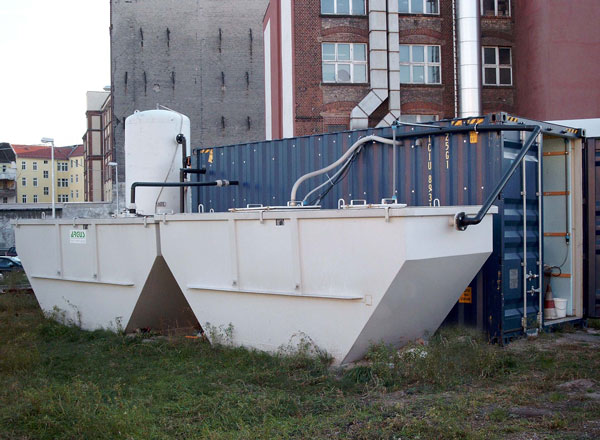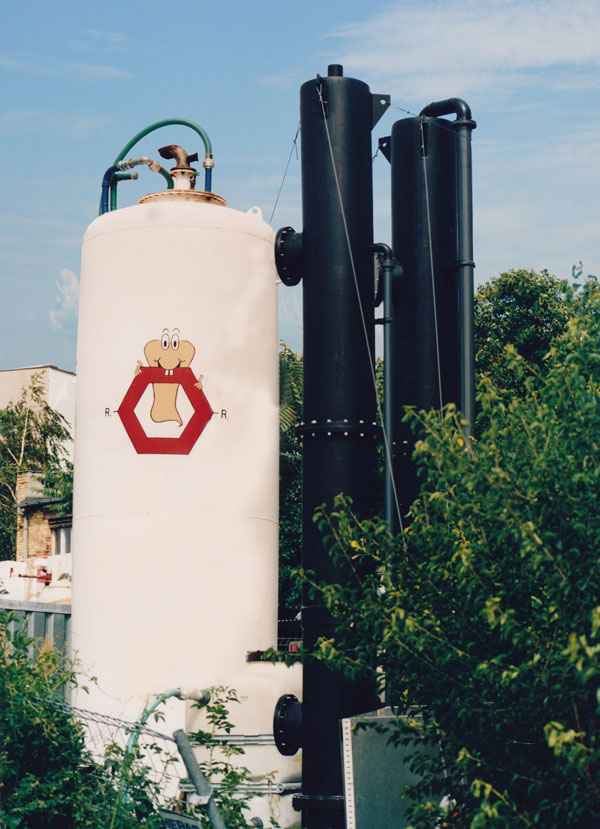


ARGUS Umweltbiotechnologie GmbH



Automated Gravel-filter backwashing with SPS-control
Treatment plant for BTEX/volatile chlorinated hydrocarbons
Physical-biological remediation
Bioreactor with stripping installations
Adsorption on activated carbon
Groundwater Remediation
Our range of services in the area of groundwater remediation encompasses planning of groundwater remediation installations, their construction, operation and maintenance, as well as the production of required infrastructure (for supply and discharge of groundwater etc.). Through the use of modern automated technology, project visualisation and remote monitoring, we have installations which are low-maintenance and offer increased operational reliability/process stabilisation and availability.
Our experience over many years in remediation plant construction and the modular nature of our installations allow us to offer an ecologically and economically optimal process for every situation.
Our range of services in the area of groundwater remediation encompasses planning of groundwater remediation installations, their construction, operation and maintenance, as well as the production of required infrastructure (for supply and discharge of groundwater etc.). Through the use of modern automated technology, project visualisation and remote monitoring, we have installations which are low-maintenance and offer increased operational reliability/process stabilisation and availability.
Our experience over many years in remediation plant construction and the modular nature of our installations allow us to offer an ecologically and economically optimal process for every situation.
ARGUS GmbH offers the following methods for clean-up of contaminated groundwater:

 •
• Sedimentation
Sedimentation
 •
• Light-NAPL Separator
Light-NAPL Separator
 •
• Gravel filtration
Gravel filtration
 •
• Packed-bed-/Submerse-biology
Packed-bed-/Submerse-biology
 •
• Desorption Columns
Desorption Columns
 •
• Adsorption Filters (activated-carbon, adsorbent resins)
Adsorption Filters (activated-carbon, adsorbent resins)
 •
• Ion Exchanger
Ion Exchanger

 •
• Sedimentation
Sedimentation •
• Light-NAPL Separator
Light-NAPL Separator •
• Gravel filtration
Gravel filtration •
• Packed-bed-/Submerse-biology
Packed-bed-/Submerse-biology •
• Desorption Columns
Desorption Columns •
• Adsorption Filters (activated-carbon, adsorbent resins)
Adsorption Filters (activated-carbon, adsorbent resins) •
• Ion Exchanger
Ion ExchangerNext to the “classic“ processes for groundwater remediation, e.g. adsorption (activated-carbon filtration) or stripping, we also favour microbiological processes and combinations of microbiological and physico-chemical clean- up steps.
Microbiological processes suit the following types of groundwater contamination:
 •
• Benzin, Toluene, Ethylbenzene, Xylene (BTEX)
Benzin, Toluene, Ethylbenzene, Xylene (BTEX)
 •
• Mineral oil Hydrocarbons (e.g. Diesel, Heating oil, Transformator oil etc..)
Mineral oil Hydrocarbons (e.g. Diesel, Heating oil, Transformator oil etc..)
 •
• Low condensed Polycyclic Aromatic Hydrocarbons (PAH)
Low condensed Polycyclic Aromatic Hydrocarbons (PAH)
 •
• Surfactants
Surfactants
 •
• Phenols (in particular Alkylphenols)
Phenols (in particular Alkylphenols)
 •
• Semi-Volatile Halogenated Hydrocarbons (SVHH) – limited capability
Semi-Volatile Halogenated Hydrocarbons (SVHH) – limited capability
 •
• Benzin, Toluene, Ethylbenzene, Xylene (BTEX)
Benzin, Toluene, Ethylbenzene, Xylene (BTEX) •
• Mineral oil Hydrocarbons (e.g. Diesel, Heating oil, Transformator oil etc..)
Mineral oil Hydrocarbons (e.g. Diesel, Heating oil, Transformator oil etc..) •
• Low condensed Polycyclic Aromatic Hydrocarbons (PAH)
Low condensed Polycyclic Aromatic Hydrocarbons (PAH) •
• Surfactants
Surfactants •
• Phenols (in particular Alkylphenols)
Phenols (in particular Alkylphenols)  •
• Semi-Volatile Halogenated Hydrocarbons (SVHH) – limited capability
Semi-Volatile Halogenated Hydrocarbons (SVHH) – limited capabilityFor contaminants which are either partially biologically degradable or unable to be broken down by microbiology, we include a multi-stage adsorption process (differing activated-carbon types, and in special cases adsorbent resins). In this process, the contaminants accumulate and become concentrated on the adsorbent. The loaded adsorption material is incorporated into special installations as a type of regeneration/recovery.
In special cases, for example heavy metal or cyanide contamination, we incorporate ion exchangers. In multi-stage installations, ion exchangers are able to regenerate during the operation of the system.
For semi-volatile contaminants such as BTEX or SVHH, we also use stripping installations (desorption columns, sieve tray tower). In this process, contaminants are stripped from the groundwater through injection of air against the flow of water. The contaminated exhaust air is then subsequently cleaned using suitable techniques (air activated-carbon, biofilter, CatOx).
Stripping of semi-volatile contaminants can also be performed directly in the groundwater aquifer (Airsparging). Air is injected into the aquifer through a system of aerators. The semi-volatile contaminants are then driven out of the saturated zone and are subsequently extracted through soil vapour. The injected air also stimulates the biodegradation of contaminants by microorganisms.
This process suits permeable and homogenous soil types in particular. The process therefore has advantages on built and developed sites, as the structural environment generally remains unimpacted during installation and operation.
This process suits permeable and homogenous soil types in particular. The process therefore has advantages on built and developed sites, as the structural environment generally remains unimpacted during installation and operation.
Case-study: Biological Groundwater Remediation
Case-study: Biological Groundwater Remediation
Case-study: Biological Groundwater Remediation
Case-study: Biological Groundwater Remediation

Case-study: Physical-Biological Groundwater Remediation
Case-study: Physical-Biological Groundwater Remediation
Case-study: Physical-Biological Groundwater Remediation
Case-study: Physical-Biological Groundwater Remediation


Case Study: Desorption with Biological Exhaust-Air Treatment
Case Study: Desorption with Biological Exhaust-Air Treatment
Case Study: Desorption with Biological Exhaust-Air Treatment
Case Study: Desorption with Biological Exhaust-Air Treatment

For microbiological clean-up of contaminated groundwater, we install submersed or “Packed-bed” reactors. As microorganisms within the submersed reactor are mobilised and go into suspension, they become re-attached to a special growth material in the Packed-bed reactor. A greater space time yield can be achieved in this effect. The dwell time is shortened. As a precaution, we attach an activated-carbon filter downstream from the biological stage.
As clean-up performance in the microbiological stage is typically quite high (dependent on contaminant type and concentration before remediation), this allows for considerable savings in activated-carbon usage and energy. This makes microbiological remediation a unique resource saving and cost-effective process.
As clean-up performance in the microbiological stage is typically quite high (dependent on contaminant type and concentration before remediation), this allows for considerable savings in activated-carbon usage and energy. This makes microbiological remediation a unique resource saving and cost-effective process.
© 2024 ARGUS Umweltbiotechnologie GmbH

Services
